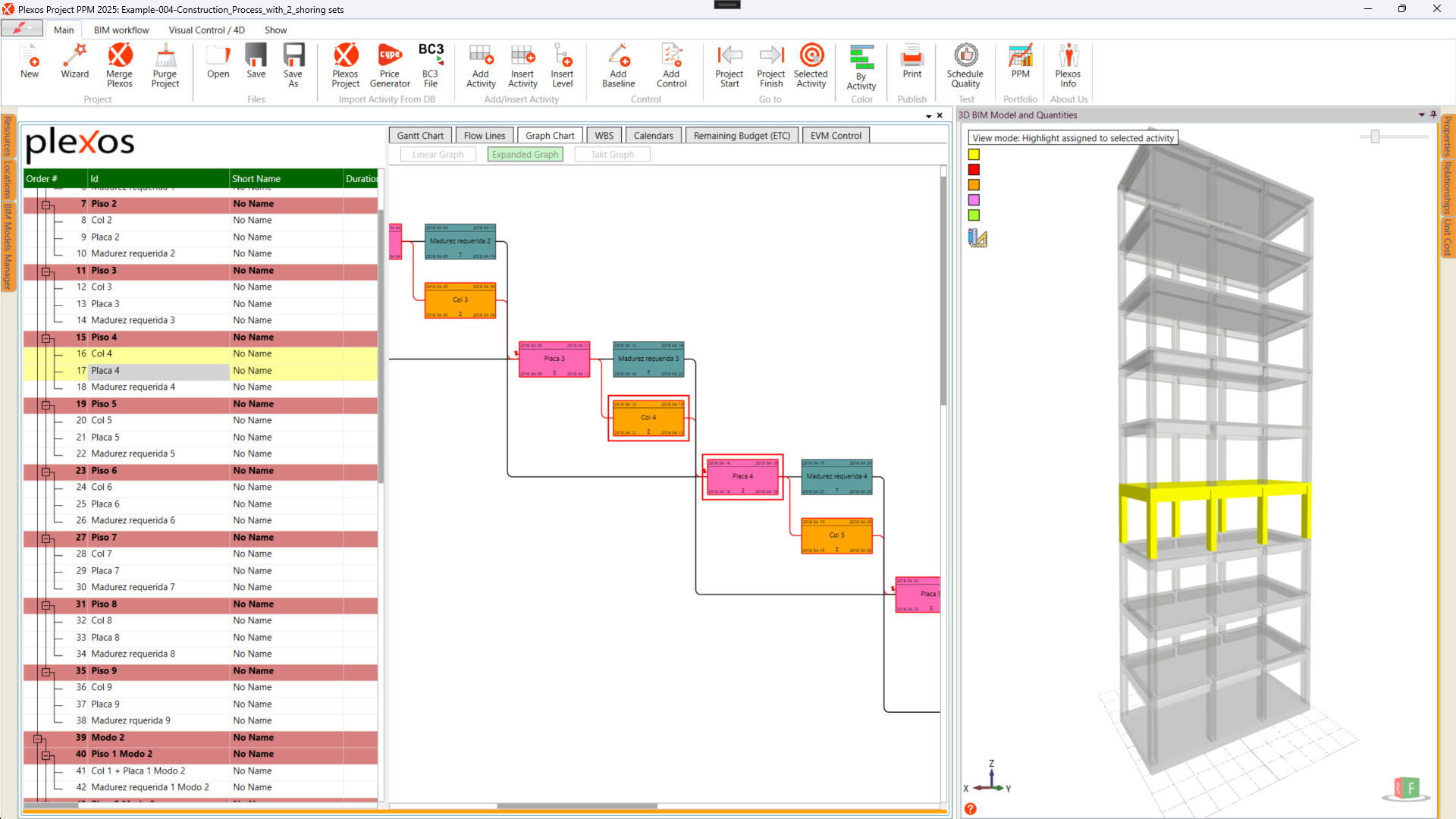
Construction Process with 2 shoring Sets
This example shows how to schedule the construction process of a 9-story conceptual structure considering the works: columns, slabs, and concrete hardening with four different scheduling methods:
Detailed schedule: Considering three activities: columns, slabs, and concrete hardening, with only Finish-to-Start relationships.
Semi-detailed schedule: Considering two activities, the first joining the activities of columns and slabs into one activity, and the second for the concrete hardening. This solution requires Finish-to-Start and Finish-to-Finish relationships.
Compact schedule: Considering only one activity joining the activities of columns, slabs, and modeling the concrete hardening as a Finish-to-Finish relationship. This solution is modeled with Finish-to-Start and Finish-to-Finish relationships.
Schedule with sub-activities: Considering just one activity for columns and slabs, and another one for the concrete hardening period.
The durations and calendars considered for the activities are:
Columns: 9 days Project calendar (work calendar)
Slabs: 3 days Project calendar (work calendar)
Concrete hardening: The estimated durations for achieving the required maturity of the slabs and their subsequent unshoring are:
Slab 1: 8 days
Slab 2 to 8: 7 days
Slab 9: 2 days
The calendar is the "Natural calendar", with all days initially designated as working days.
With only two sets of shores available, it's necessary to establish a relationship between the required maturity for unshoring each slab (I), and the shoring of the slab (i+2). For projects with three sets of slabs, this relationship would extend to the shoring of the third subsequent slab (i+3).
The time required for the construction process is the same regardless of the scheduling method used, and the specific details are provided in the following paragraphs:
Detailed schedule: This case, despite being the simplest, necessitates the highest number of activities (27) and relationships (33) (Figure 2).





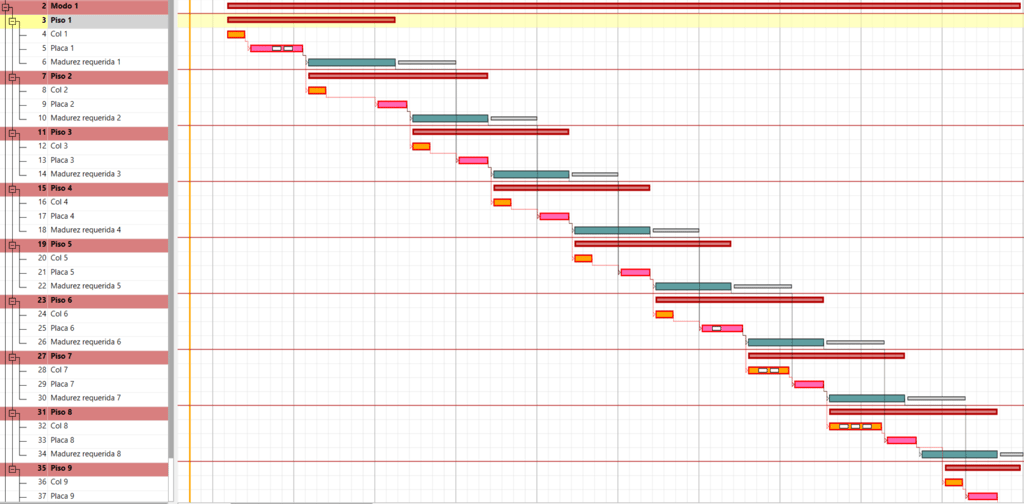

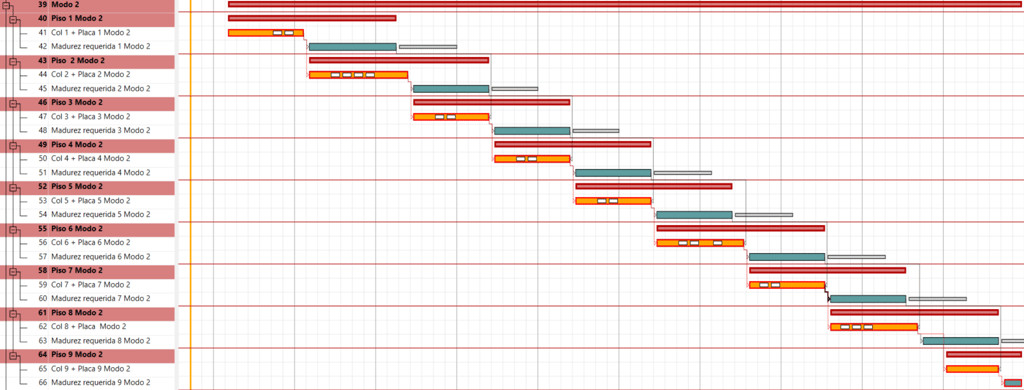



Semi-detailed schedule: In this scheduling mode, activities columns and slabs are joined for each level into one activity, requiring 18 activities and 26 relationships.
The Finish-to-Finish relationship from required maturity (i) to (i+2) is established in 3 work days, corresponding to the duration of the slab (Figure 3 Up).
Compact schedule: This scheduling mode agrupate all the activities corresponding to a level into just one activity, requiring 9 activities and 18 relationships.
The Finish-to-Finish relationship is established in 3 work days and an additional delay of 8 days. The work days correspond to the duration of the slab, and the additional delay to the concrete hardening.
Remember that the additional delay works with a natural calendar, where all days are labor days.
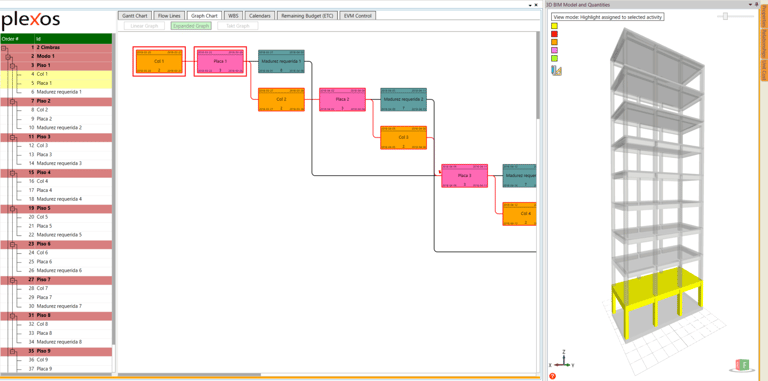

Figure 2. Graph and Gantt chart for detailed mode solution
Figure 3. Graph and Gantt chart for semi-detailed mode solution
Schedule with sub-activities: This fourth method considers only two activities, the first for columns and slabs and the second for the hardening period, encompassing nine distinct sub-activities, each with the durations shown in Figure 4, and the graph and Gantt chart in Figure 5:
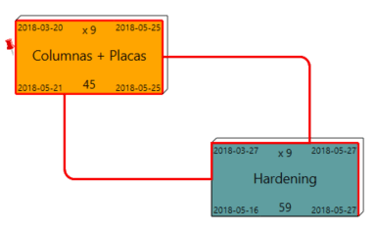

Figure 4. Graph and Gantt chart for semi-detailed mode solution
Figure 6. Graph and Gantt chart for sub-activities mode solution
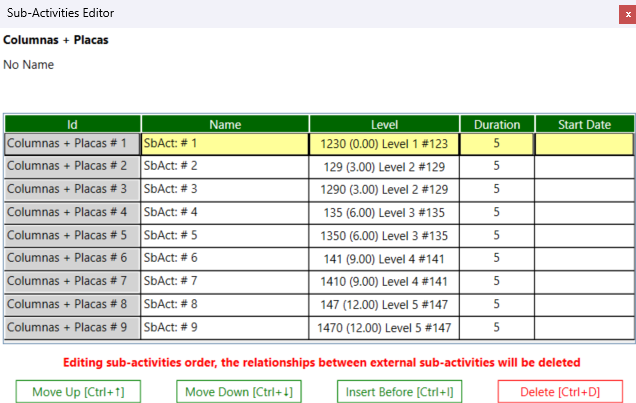

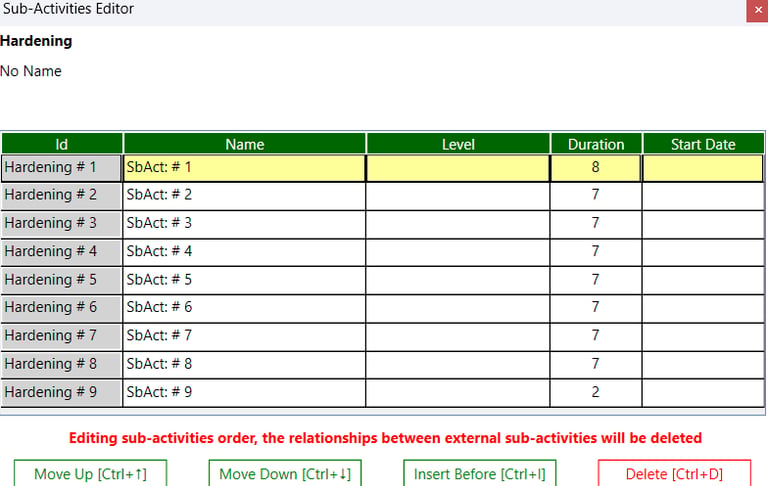

For large projects, this method, utilizing sub-activities, offers the simplest and most concise scheduling approach, requiring only two activities and two relationships to encompass the entire project (Figure 6).
Figure 5. Durations for sub-activities in fourth method
Figure 1. Example graph


